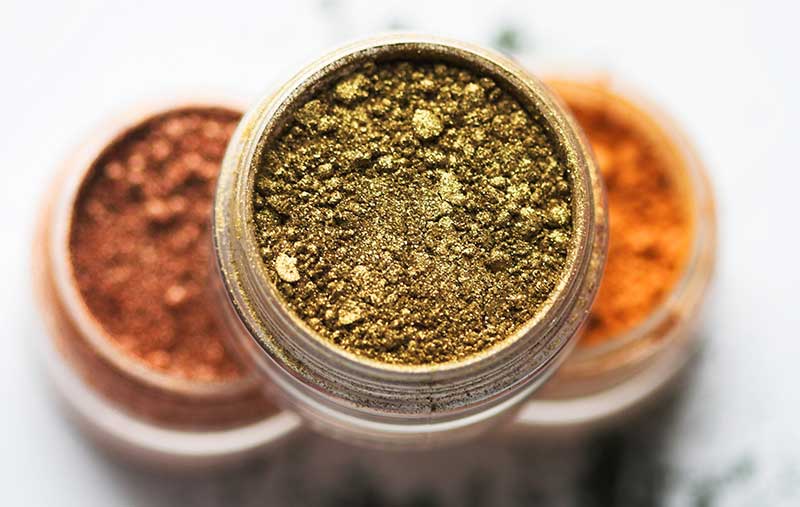Pearl Pigments are used in many types of colour cosmetics and personal care application to add colour, luster and shine. Silver & interference pearl pigments are excellent starting points towards adding sophistication to virtually any formulation. It imparts that second dimension of pearl essence to any elegant cosmetics & personal care products. Their white mass tone provides outstanding coverage yet renders a natural look to the skin. Colour luster pigments add not just colour but ready to use intense, vivid colour & shine.They surpass the effect from using the combination of dye or absorption pigments with pearl and provide far more formulation options.

Pearl pigments are very fine powdered mica pigments that are non-toxic, inert, and can be mixed into virtually any viscous, transparent medium and applied to any surface. The following is the list of applications for which our Pearl Pigments are being used:
- Lipsticks, Lip balms
- Eyes Shadows
- Mascara
- Nail Lacquers
- Liquid Foundations
- Eye Liners
- Hair Styling Gels
- Soap Bars
Since they are not metals, they will never rust or tarnish. The variety of finishes Pearl can produce is nearly endless from metallic sheens to pearlescent shimmers to all manner of faux finishes.
The industry uses three key pigment classes: absorption pigments, metal effect pigments and pearlescent pigments. We are familiar with absorption pigments from watercolor paints, for example. They represent “true” colors as they absorb part of the light which hits them and scatter the rest. This gives them their own body color. In contrast, silver metal effect pigments throw almost all the light back like lots of tiny mirrors. This gives them their great surface luster, which is sometimes considered dazzling.
Pearlescent pigments are truly multi-talented pigments. They combine the properties of the other two groups: thanks to their particular layered structure, the light is reflected at different levels in the pigment. Under the right circumstances, the reflected waves can interfere with each other, causing amplification or cancellation. Depending on the structure of the layers in each case, this creates the brilliant interference color which gives the pigments their unique character.
Pearlescent pigments work based on the following phenomenon: behind their attractive shimmer is the simple process of refraction. At boundary layers, such as between air and glass, white light is broken up and divided into its components – the colors of the rainbow. The greater the difference between the refractive indexes of the adjacent materials, the stronger the refraction. Depending on the angle at which the light hits the boundary layer, it may be completely reflected or passed through unchanged.
A key feature of the classic pearlescent pigments is the difference in color between the share of the incoming light which is reflected by the pigment and the share of light completely passing through. The color of the transmitted light is complementary to the color of the reflected light. For example, a red reflection color goes with a green transmission color, while yellow and blue form another pair of reflected and transmitted light.
